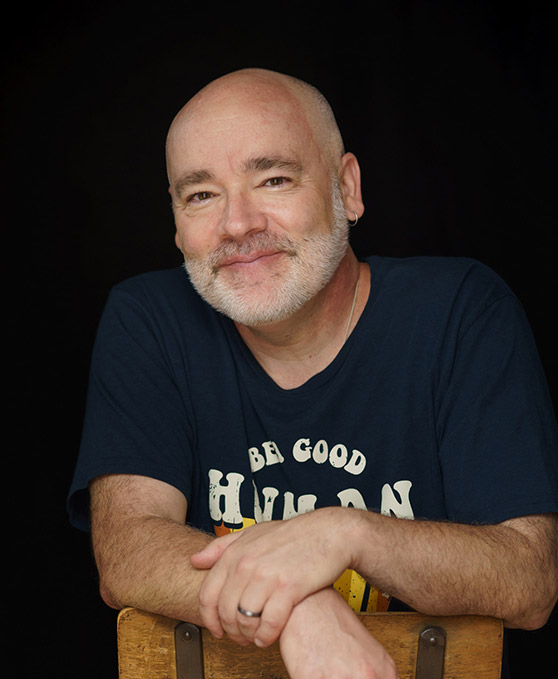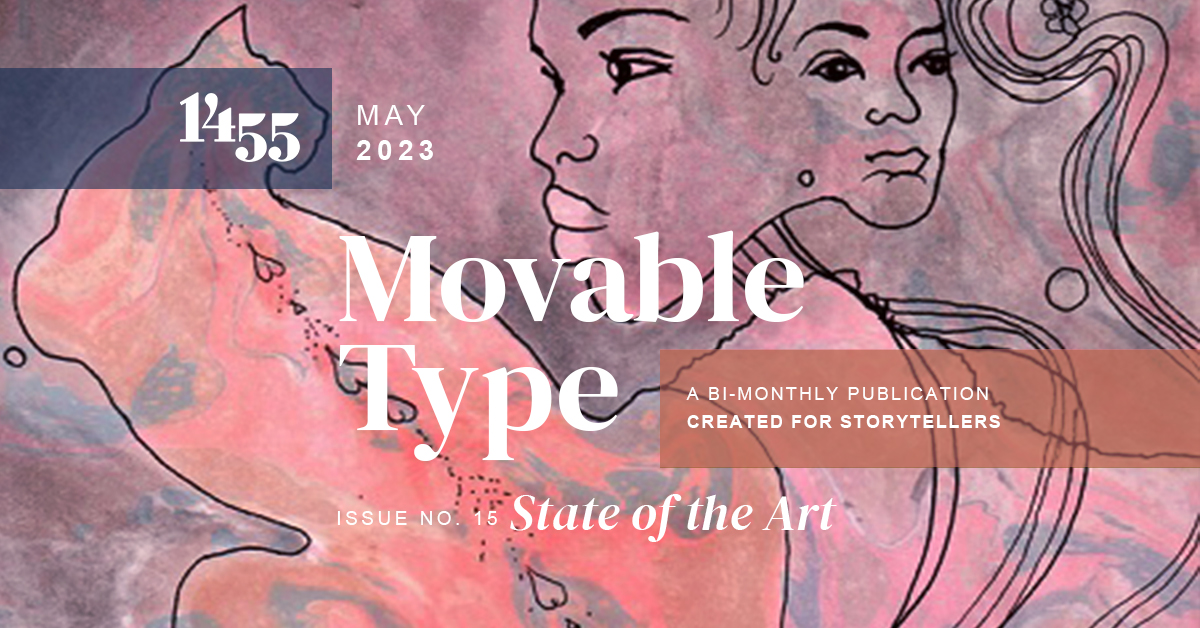Sean Murphy
Endnote: AI Will Not Replace Art
“Etonne-moi!”
—Serge Diaghilev, to Jean Cocteau
Adam Gopnik, the prolific and brilliant writer whose work has appeared in The New Yorker for several decades, has a timely piece in The New York Times that anyone interested in storytelling (why we do it, how we do it, what happens when it’s done well, etc.) should read. Entitled “What We Lose When We Push Our Kids to ‘Achieve’,” it explores the difference between achievement and accomplishment. He notes that achievement is the completion of the task imposed from outside — the reward often being a path to the next achievement. Accomplishment is the end point of an engulfing activity we’ve chosen, whose reward is the sudden rush of fulfillment, the sense of happiness that rises uniquely from absorption in a thing outside ourselves.
Needless to say, in a world where choosing the right preschool is practically a profession for some parents, the pressures we feel to excel, be recognized, and add all accolades to one’s portfolio are only increasing. What does it say about everything from careers to creativity when happiness and fulfilment are secondary concerns, if they are part of the equation at all? Gopnik recalls the process of teaching himself to play guitar, and how the discipline learned through repetition of his experience imparted a curious satisfaction that still reverberates throughout his professional and personal life.
Gopnik addresses some broader societal implications, adding And surely many of the things that our kids are asked to achieve can lead to self-discovery; taught well, they may learn to love new and unexpected things for their own sake. The trick may lie in the teaching. My sister Alison Gopnik, a developmental psychologist and author, puts this well: If we taught our kids softball the way we teach them science, they would hate softball as much as they hate science, but if we taught them science as we teach them softball, by practice and absorption, they might love both.
Alison Gopnik’s quote reminded me of a meaningful passage from one of my favorite poets, William Matthews. In “Mingus at the Showplace,” he remembers, as a teenager, meeting the jazz legend and presenting him with one of his poems:
“There’s a lot of that going around,” he said,
and Sweet Baby Jesus he was right. He laughed
amiably. He didn’t look as if he thought
bad poems were dangerous, the way some poets do.
If they were baseball executives they’d plot
to destroy sandlots everywhere so that the game
could be saved from children.
And this, in turn, called to mind 1455’s mission to celebrate and explore storytelling in light of the fact that every other article one reads mentions AI and the myriad ways this technology will imperil art, if not civilization. My hot take? Relax. Computers and their ever-advanced algorithms can reproduce and even mimic, but they lack (at least) two things separating creativity from counterfeit: originality and soul. It seems worth suggesting that, among many other things, art is antithetical to short cuts. That’s the crux, and generally speaking, is true of any achievement: there are no “hacks” to become a proficient musician, painter, or athlete; even granting that appraisals of art are subjective there’s an assumed authority (on the part of both creator and critic) that imparts, if not authority, credibility.
And this, in turn, had me revisiting a recent feature from The Guardian about legend and iconoclast Jim Jarmusch. Money quote from the piece:
“I consider myself an amateur,” Jarmusch offers. “Because the root of the word amateur contains the word love. So, it’s like for the love of doing something, not a lack of skill necessarily, whereas professionalism is: I do this to make money. I’m interested in imperfection because I’ve learned that mistakes are sometimes very valuable, even very beautiful. I think perfection is imperfect but imperfection is perfect.
Here, Jarmusch joins Gopnik, Matthews, (and Mingus!) in recognizing that, regardless of results, if you’re not doing something from the heart, you’ve lost before you even begin. Another passage worth quoting in full:
This approach is hardly surprising for a film-maker who has a reputation for being fervently, even obdurately, independent. “I’m a control freak in that I have to do it my own way,” Jarmusch says. “I have to choose all my own collaborators. I have to have final cut. I have to produce it through my own company. And as for the people financing the films, I allow them to give me notes on a rough cut but I always, contractually, have absolutely no obligation to use them.”
When making 1995’s Dead Man, Jarmusch briefly flirted with working with larger production companies and found himself at loggerheads with the then boss of Miramax, Harvey Weinstein. After Jarmusch refused to take his suggested cuts on board, Weinstein reportedly sabotaged and minimized the film’s cinematic release. Despite this, it is often declared a masterpiece by critics, and has come to perfectly embody Jarmusch’s lifelong commitment to art over commerce.
In addition to Jarmusch locking horns with the odious Harvey Weinstein, on principle, I also concur that Dead Man is his masterpiece, and my appraisal, on the occasion of the movie receiving the Criterion Collection treatment in 2017, is here.
And this, in turn, led me to contemplate how everything we do is storytelling of a sort; it’s when we excel—or go even further out—that we produce narratives worth remembering, worth emulating (or programming AI to imitate). Which brings me to two radically different human beings: both old souls, and, like Jarmusch, their commitment and integrity led to profoundly genre-altering results.
First, the man who played saxophone as well as anyone has ever done anything, John Coltrane (much more on him, here). His drive was so relentless it became difficult, literally, for his audience to keep up with him. Rashied Ali, who worked closely with Coltrane in the final years of his life, compares him to a competitive athlete: “He was like a fighter who warms up in the dressing room; he’d break a sweat (backstage)…he was always playing.” This combination of restless energy and exploration led to concert experiences that were as exhausting for audiences as they were for the musicians.
Example #2, and it seems safe to guess no one has ever compared him to John Coltrane, is Jay Adams. If you don’t know who he is, you have not seen what I consider one of the best documentaries of this century, Dog Town and Z-Boys. Among a steady diet of delectable footage, there’s an extraordinary sequence that was, slightly miraculously—considering the time and circumstances (1975, a skateboarding competition)—recorded and we can actually watch it, seeing what happened as the participants reminisce about what went down that day.
To me, this remarkable moment captures, in sport and culture, a paradigm shift that echoes similar seismic changes instigated by some of our best artists and athletes over time. It’s difficult to imagine an event more perfectly synthesizing the aspects of a style derived from practice and improvisation: Jay Adams’s epic skate routine heard ‘round the world (or at least the underground, which is always where the magic begins) is sui generis; a moment he owns, and one that defines the skater and the sport.
This is why AI will never replace or even encroach on authentic art, and the artistry of original storytelling. In order to play the music or write the books in the first place, a sufficient amount of mastery is required. The routine, whether it’s hours alone in a gym or a pool, at a desk or woodshedding in a soundproof room, is how innovation is cultivated. Sensitive and discerning human beings want to be astonished, and surprised. We want possibility, we want to feel the kind of connections that speech and prayer and sentiment—however sincerely conveyed—cannot quite capture.
In closing, we’ll let the Mighty Charles Mingus drop the mic in his inimitable way.

Sean Murphy is the Founding Director of 1455, a non-profit that celebrates storytelling. He has appeared on NPR’s “All Things Considered” and been quoted in USA Today, The New York Times, The Huffington Post, and AdAge. A long-time columnist for PopMatters, his work has also appeared in Salon, The Village Voice, Washington City Paper, The Good Men Project, Sequestrum, Blue Mountain Review, and others. His chapbook, The Blackened Blues, was published by Finishing Line Press in 2021. His second collection of poems, Rhapsodies in Blue was published by Kelsay Books in 2023, and This Kind of Man, his first collection of short fiction, is forthcoming in 2024. He has been nominated four times for the Pushcart Prize, twice for Best of Net, and his book Please Talk about Me When I’m Gone was the winner of Memoir Magazine’s 2022 Memoir Prize.
Website: seanmurphy.net | bullmurph.com
Twitter: @bullmurph
Instagram: @bullmurph
Facebook: facebook.com/AuthorSeanMurphy


